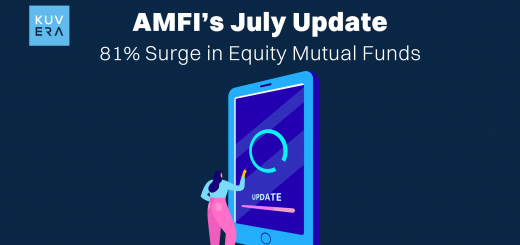In a strategic move to bolster the financial ecosystem, the Reserve Bank of India (RBI) has recently revised its risk weight norms for bank loans extended to Non-Banking Financial Companies (NBFCs) and Microfinance Institutions (MFIs). This policy adjustment may have significant implications across various sectors including the Debt Mutual Funds in India. The move is expected to lower borrowing costs for NBFCs, improve their financial stability, and reshape the debt market landscape.
Understanding Risk Weights in Banking
Risk weights are a fundamental component of the banking sector’s regulatory framework, they determine the capital banks must hold against their assets. By assigning a percentage to different asset classes based on their perceived risk, RBI aims to ensure that banks maintain adequate capital reserves so as to absorb losses or shocks. Higher risk weights necessitate more capital allocation, potentially restricting a bank’s lending capacity.
Earlier, loans to NBFCs and MFIs attracted higher risk weights due to concerns over asset quality and financial stability. However, with improvements in these institutions’ balance sheets, the RBI has reduced the risk weights, facilitating easier access to bank credit.
RBI’s Revised Risk Weight Norms and Their Implications
In February 2025, the RBI announced a reduction in risk weights for bank loans to NBFCs and MFIs from 125% to 100% to be effective from 1st April, 2025. This recalibration is expected to enhance credit flow to these sectors, fostering greater financial inclusion and economic activity. As lending to NBFCs constitutes 9% of overall banking system credit, with this policy revision the banks can now extend more credit to NBFCs and MFIs at lower borrowing costs.
The RBI had increased risk weights on banks’ exposure to NBFCs and certain consumer credit segments in November 2023. On February 26, it reversed the hike for bank loans to NBFCs and some MFI loans, effective from April 1, 2025. Following the initial hike, bank lending to NBFCs remained stagnant at ₹13 trillion until September 2024, with some revival in December 2024. While the rollback may boost bank credit flow to NBFCs providing a conducive environment for lending, NBFCs may adopt an approach prioritising asset quality over aggressive expansion. The overall impact will depend on how banks and NBFCs adjust their strategies in response to the regulatory easing.
Impact on Debt Mutual Funds
Debt mutual funds, which invest in fixed-income securities, are poised to experience both direct and indirect effects from the RBI’s revised norms.
1. Enhanced Credit Quality of Holdings
Improved access to cheaper funding for NBFCs and MFIs may enhance their credit quality, reducing credit risk for debt mutual funds and improving risk-adjusted returns for investors.
2. Potential for Yield Compression
The influx of bank credit to NBFCs and MFIs at lower interest rates may lead to a compression in yields of debt instruments issued by these entities. For debt mutual funds, this could translate into lower yields on new investments, affecting overall fund performance. Fund managers may need to recalibrate their portfolios to balance yield and risk effectively.
3. Diversification Opportunities
The policy change may encourage NBFCs and MFIs to issue a broader range of debt instruments to capitalise on favorable borrowing conditions.
4. Market Sentiment and Inflows
Improved credit conditions in the NBFC and MFI sectors may boost investor confidence, attracting higher inflows into debt mutual funds and driving AUM growth.
Impact on Specific Debt Mutual Fund Schemes
To understand the impact of RBI’s easing of risk weight norms, we analyze its effect on specific schemes that have substantial exposure to NBFCs and MFIs.
The policy change may influence credit spreads, borrowing costs, and the overall risk-reward dynamics of these funds:
| S. No. | Scheme | Return- 1Yr | TER |
|---|---|---|---|
| 1 | DSP Credit Risk Growth Direct Plan | 22.46% | 0.40% |
| 2 | Aditya Birla Sun Life Credit Risk Growth Direct Plan | 16.77% | 0.67% |
| 3 | Aditya Birla Sun Life Medium Term Growth Direct Plan | 13.63% | 0.86% |
| 4 | Invesco India Credit Risk Growth Direct Plan | 10.80% | 0.28% |
| 5 | ICICI Prudential Long Term Bond Growth Direct Plan | 10.14% | 0.40% |
Source: Kuvera, 25 March, 2025
1. Impact on DSP Credit Risk Growth Direct Plan
This fund focuses on high-yield corporate bonds, particularly NBFC papers. Lower borrowing costs for NBFCs mean that existing bonds of these entities may appreciate in value, potentially boosting returns further. However, future yields may decline, affecting reinvestment opportunities.
2. Aditya Birla Sun Life Credit Risk Growth Direct Plan
Like DSP, this fund has significant exposure to NBFC debt. Lower risk weights reduce the funding costs of NBFCs, leading to improved credit quality and lower default risks. This could reduce risk perception and drive higher fund inflows.
3. Aditya Birla Sun Life Medium Term Growth Direct Plan
Medium-term funds invest in 5–7 year corporate bonds, including those issued by NBFCs. Lower borrowing costs for NBFCs may increase demand for medium-term bonds, causing their yields to fall and prices to rise, leading to short-term capital appreciation.
4. Invesco India Credit Risk Growth Direct Plan
A credit risk fund with a low TER, making it cost-effective. RBI’s move reduces default risk among NBFCs, improving the fund’s risk-reward balance. Lower borrowing costs for NBFCs could result in spread compression, slightly lowering expected yields.
5. ICICI Prudential Long Term Bond Growth Direct Plan
This fund holds long-duration bonds, making it sensitive to interest rate changes. NBFC bonds maturing in 7–10 years may see improved demand, reducing their yield and increasing bond prices, leading to potential capital appreciation.
Broader Economic Implications
The RBI’s move may boost credit flow to NBFCs and MFIs, benefiting housing, consumer finance, and SMEs, driving economic growth and financial inclusion, while requiring prudent risk management to maintain stability.
Wrapping Up
The RBI’s easing of risk weight norms for bank loans to NBFCs and MFIs marks a significant policy shift aimed at strengthening the financial sector and promoting economic growth. While this move presents opportunities for enhanced credit flow and improved performance of debt mutual funds, it also necessitates vigilant risk assessment and management. As the financial landscape evolves, stakeholders must navigate these changes with a balanced approach, leveraging opportunities while safeguarding against potential risks.
Interested in how we think about the markets?
Read more: Zen And The Art Of Investing
Watch here: Learn about the F&O craze in India












